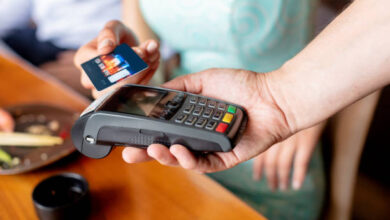Essential Types of Software Every Restaurant Business Needs

The restaurant business can be an intricate and challenging operation with its numerous processes, from inventory management and employee scheduling to table reservations and order processing. With the evolution of technology, numerous software solutions have come into play, streamlining these operations and contributing to the overall success of the business. Here are the top six essential types of software every restaurant business needs, with examples of each.
1. Point of Sale (POS) Software
A Point of Sale system is the central hub of any restaurant, coordinating various tasks from accepting orders to managing payments. A high-quality POS software will streamline these processes, making operations smooth and efficient.
An excellent example is Toast POS. It provides a range of features like online ordering, delivery management, and customer loyalty programs. It’s a robust solution for managing all your restaurant’s operational needs, from the front of the house to the back.
2. Inventory Management Software
Restaurants must effectively manage their inventory to avoid unnecessary losses or missed opportunities due to insufficient stock. Inventory management software can automatically track supplies, alert when stock is low, and even suggest orders based on sales trends.
A standout in this space is MarketMan. It’s an excellent solution that offers comprehensive inventory control, from tracking product usage and waste to managing suppliers and automating purchasing.
3. Employee Scheduling Software
Employee scheduling can be a complex task in restaurants due to the variety of roles, shifts, and possible employee preferences. Scheduling software can reduce the time spent on this task, decrease errors, and improve overall staff satisfaction.
7Shifts is a fantastic option for this need. It provides a simple and efficient way to schedule staff, monitor work hours, handle shift swaps, and even facilitate communication among team members.
4. Table Reservation and Management Software
Table management software helps optimize the seating plan, reduce wait times for customers, and manage reservations efficiently. These systems can contribute to a better customer experience, which is key to repeat business.
A go-to option is OpenTable. It allows customers to make reservations online and provides restaurant owners with a platform to manage those reservations, including keeping track of repeat customers and their preferences.
5. Customer Relationship Management (CRM) Software
CRM software can help restaurants manage their customer base, keep track of customer preferences, run loyalty programs, and carry out targeted marketing campaigns. Effective use of CRM can lead to higher customer retention and increased profits.
A great example of CRM software is Square for Restaurants. Besides its basic POS functionalities, it also offers strong customer management capabilities, including feedback management, customer profiles, and loyalty program handling.
6. Digital Signage Software
In an increasingly digital world, restaurants must also pay attention to the power of visual engagement. Digital signage is an influential tool for restaurants, facilitating menu display, promotional material, and even customer interaction. They can serve as eye-catching displays that can update dynamically according to the time of day, special offers, or stock levels.
A leading provider in this space is Mandoe Media. This innovative digital signage software is designed specifically for restaurants, enabling them to create and deploy stunning digital menus and promotional signs. To summarize, a restaurant’s success is not just about good food and great service anymore. It’s about smartly managing all operations and leveraging data for strategic decision-making. can be a game-changer for your restaurant business. By embracing these technological solutions, you can streamline operations, improve efficiency, enhance customer experience, and ultimately, boost your bottom line.




